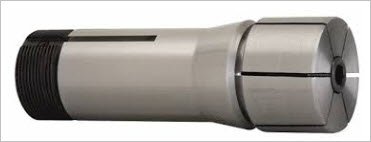- Joined
- Apr 23, 2013
- Messages
- 1,079
I did a thread a few weeks ago called home made ID expanding collets it has lots of info about what you are trying to do. I don't know if you have ever tried a slitting saw but I can tell you it is not easy. I have been making expanding collets for over 50 years and unless I am making a bunch of them (20 or more) I buy store bought ones from ebay. I now have a bunch of Rovi brand collets in my collet collection. Also have other brands but I seem to use my own or Rovi brand most of the time. Rovi makes them from very small (around 5/15 dia to 6 in dia in a 5c holder) and they have some videos on you tube showing how to set them up. I also make my own expansion bolts out of shcs. I use leadloy for my homemade ones. And slit them on my band saw. You can turn them smaller and smaller for the size you need.One of my main interests in getting a lathe was for making small scale model truck wheels. Looking around and seeing how rings are made, I'm thinking a small expanding mandrel would be very useful. These seem to have a very limited range for holding, but also seem fairly easy to DIY allowing for the exact size I need for a project. I've found a few tutorials for making these, but none seem to give a recommended size for the expansion slits. I'm probably looking at a couple mandrels to cover 5/8"-1" in diameter.
For the price of a set of expanding mandrels I could get myself a slitting saw arbor and a couple sizes of saw. I know I want a 0.01" for another project, but not sure how large I should get for making a mandrel. Sherline carries the 2" saws for their arbor in thicknesses of 0.01" to 0.057"
Maybe I'm over thinking this, the slots allow the "fingers" to separate so does the slot thickness even matter?
Assume I should do these from an easily worked steel rather than aluminum, any recommendations for material?
Thanks
Pic of some of my Rovi ID collets
https://photos.app.goo.gl/rOj3NP2KIKOMLStA3
Last edited:

